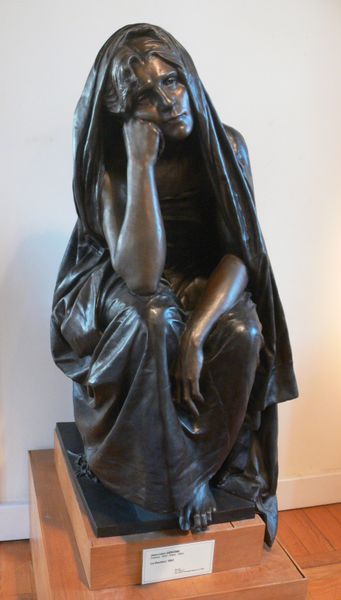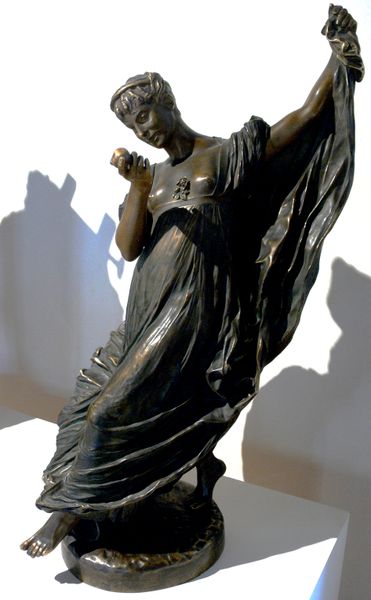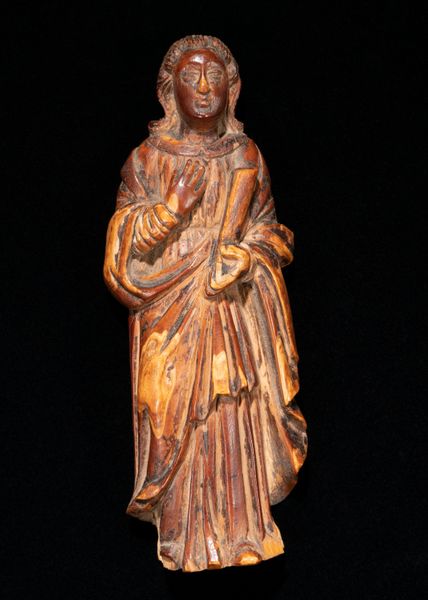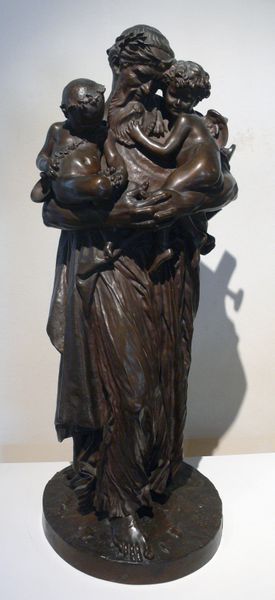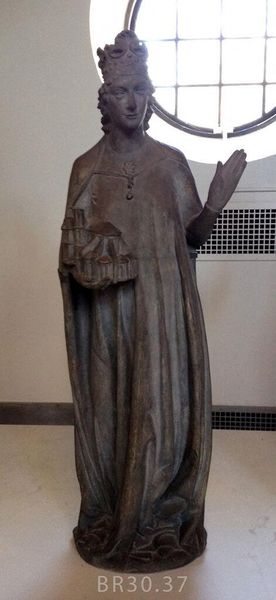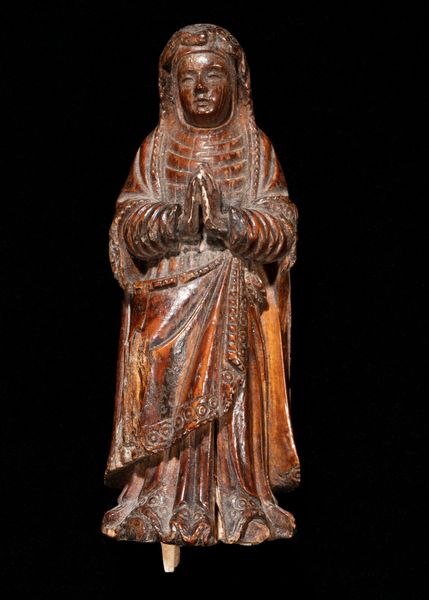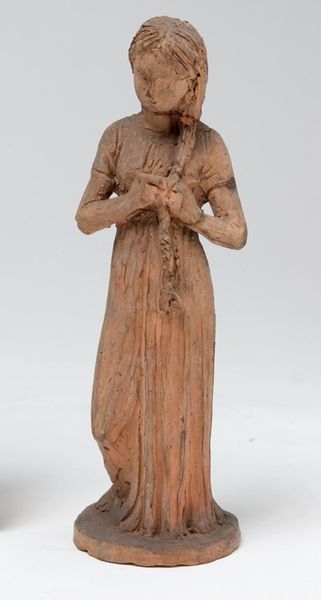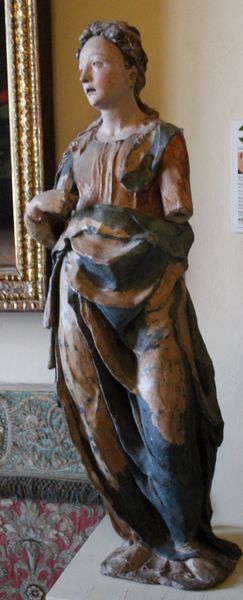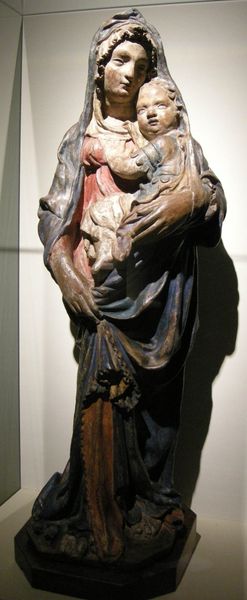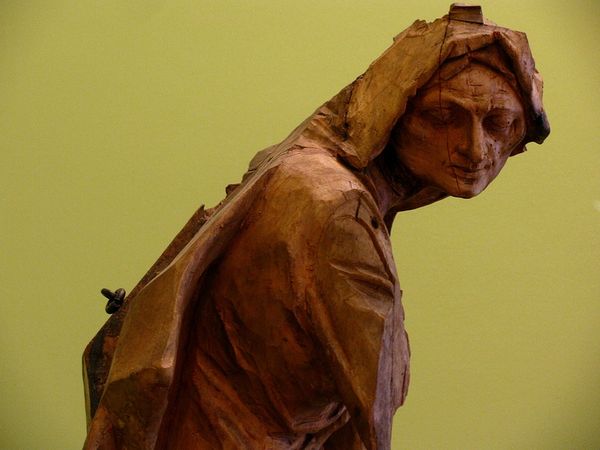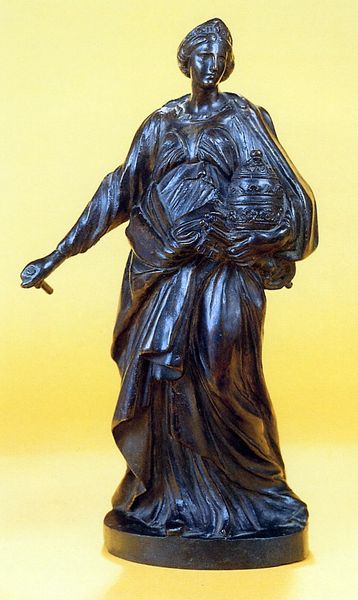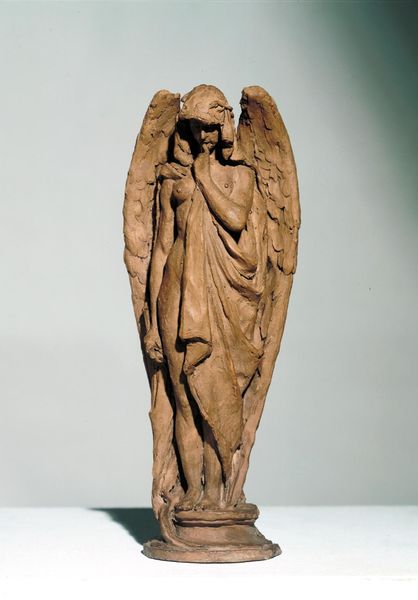
bronze, sculpture
#
portrait
#
statue
#
medieval
#
sculpture
#
human figure
#
bronze
#
sculptural image
#
figuration
#
sculpture
#
muted green
#
italian-renaissance
Copyright: Public domain
Editor: So here we have Donatello's *Magdalene Penitent*, from 1455, a wood sculpture. I'm really struck by the raw texture and how gaunt she looks. What stands out to you about the piece? Curator: For me, it’s about understanding the materials and their cultural significance. Why wood? Why this particular level of detail in depicting emaciation? We have to consider the prevailing views on women, labor, and religious devotion at the time. The act of carving itself is a process—slow, laborious, each strike intentional, isn't it? Editor: I see what you mean! The labor connects it to the broader social context, not just some artist's flash of inspiration. I hadn’t considered that. How might the choice of wood impact its reception compared to, say, marble or bronze? Curator: Exactly. Bronze implies wealth, permanence, power, referencing classical ideals. Marble also holds classical connotations and a laborious, costly process. Wood, especially rendered so realistically raw, grounds the piece. It invites a different kind of empathy, a consideration of earthly suffering tied to making itself.. Editor: That's fascinating. So it challenges these traditional boundaries that valorize certain mediums over others? Curator: Precisely. And in doing so, it challenges whose stories we value and how we value them. Is this devotional, or is this critiquing idealized female forms in a moment of reflection for broader making conventions and art market forces? Editor: Thinking about the physicality of making this sculpture and the commentary on material...I'm starting to look at it in a new way now. Thank you! Curator: My pleasure. Seeing art as a product of both skilled labor and societal forces is always a worthwhile perspective.
Comments
No comments
Be the first to comment and join the conversation on the ultimate creative platform.

